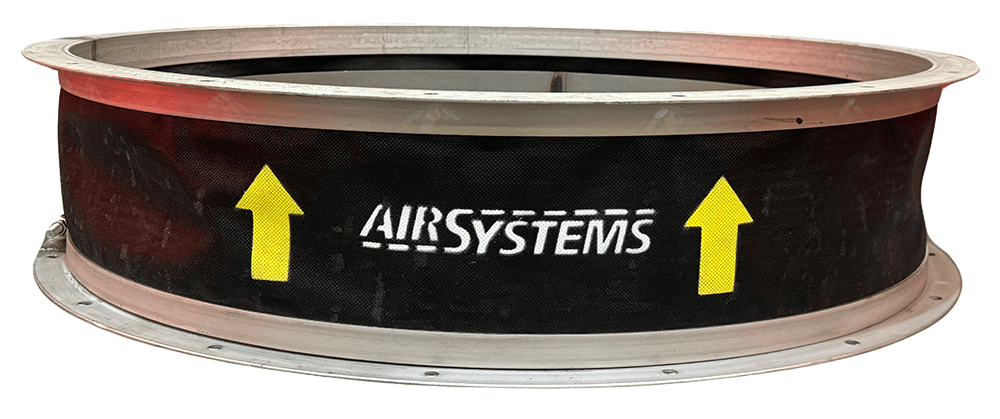
The use of fans in industrial applications is essential for maintaining a controlled environment, regulating temperatures, and ensuring proper ventilation. One important, but commonly overlooked component that plays an important role in the efficiency and safety of an industrial fan system is the flex connector. Specifying the right flex connector is essential for seamless operation and enhanced performance.
Consider Your Application Requirements
Before looking at flex connector specifics, it’s essential to have a clear understanding of your industrial fan system’s requirements. Consider the following factors:
- Fan Type – The variety and size of the industrial fan is a determining consideration in assessing the compatibility of a fan flex connector.
- Airflow and Pressure – Calculate the airflow rate and system pressure to select a flex connector that can work within the required parameters.
- Temperature and Media – Consider the temperature range and type of media being transported through the fan system to ensure the selected connector material can withstand the conditions.
- Environmental Factors – Evaluate the presence of corrosive substances, chemicals, particulates, or moisture that might affect the flex connector’s durability.
Know Your Flex Connector Options
Connector Types
Flex connectors come in various types, and each is designed to cater to specific applications. Single ply, for example, is simple, cost-effective, and suitable for low-pressure and moderate temperature applications. Multi-ply is another type, which consists of multiple layers for added strength and is ideal for higher pressure and temperature environments. Fabric ducts are common for distributing conditioned air and maintaining uniform temperatures, while insu
Connector Materials
The choice of material is crucial as it directly impacts the flex connector’s durability and performance. Common materials include:
- EPDM – Resistance to weather, ozone, and oil, making it suitable for outdoor use
- Texfilm – Resistant to extreme temperatures, chemicals, and UV radiation
- Padmaster – Provides excellent high temperature resistance
- Stainless Steel – Ideal for high-temperature and corrosive environments
Connector Sizing
Selecting the correct size and length is vital to maintaining system efficiency and preventing any pressure drops. Proper sizing ensures optimal airflow and minimizes energy consumption.
Additional Considerations
Apart from the fan system requirements, consider external factors that may affect the flex connector’s performance, such as vibration, installation, expansion, and movement. If compliance is an issue, ensure that the selected flex connector complies with industry standards and safety regulations.
Energy Efficiency
Energy-efficient humidifiers can save money on energy costs and reduce the environmental impact of your operations. The energy efficiency of the humidifier should be evaluated to ensure that it is not consuming excessive amounts of energy.
Fan Flex Connectors from Air Systems
Air Systems Fan Flex Connectors are expansion joints designed and constructed for a wide variety of application challenges. Our expert team has extensive experience developing designs from field-proven materials to ensure the correct product for our customer’s needs. Our Flex Connector capabilities include:\
- Custom designed to suit the application
- Multiple layer material compositions available
- Temperature range of -40° F to 1200°+ F
- Quick 1-2 day approval drawings
- Quick delivery
- One piece molded liquid tight designs available
Our custom-built Fan Flex Connectors are engineered to reduce vibration and relieve stress between connected components. We are ready to meet the demands of your most challenging operations and installations. Our experienced team will work with you to determine the right design to meet your needs. Contact us to learn more.
